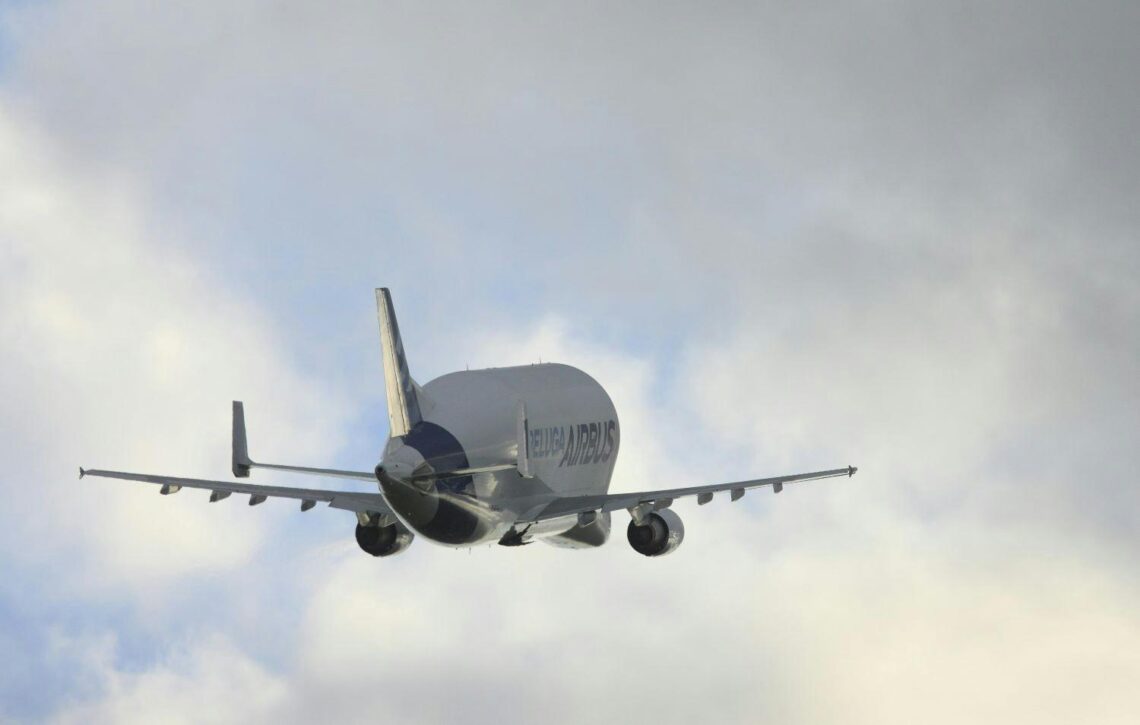TAMPA, Fla. — The Airbus-built Eutelsat 36D geostationary communications satellite landed in Sanford, Florida, March 11 ahead of a SpaceX Falcon 9 launch slated from the nearby Kennedy Space Center at the end of the month.
Eutelsat 36D had set off Saturday on an Airbus BelugaST (Super Transporter) from France where the satellite maker is based. It is the third time the manufacturer’s alternative to Ukrainian Antonov aircraft has flown a large satellite across the Atlantic since Airbus started offering an outsized freight transportation service two years ago.
The roughly 5,000-kilogram satellite is due to travel by truck to its launch site.
French fleet operator Eutelsat ordered the satellite in 2021 to replace Eutelsat 36B before it runs out of fuel in 2026 at 36 degrees East, where the satellite has been providing TV broadcast and government services across Africa, Russia, and Europe for more than 14 years.
Eutelsat 36D has 70 Ku-band transponders and is based on the Airbus Eurostar Neo platform with all-electric propulsion, meaning it would take five to six months post-launch to reach its orbital slot and enter service.
Transportation competition
Airbus also built the other two satellites that used a Beluga to fly from France to Florida: Viasat’s Inmarsat-6 F2 in January 2023 and Eutelsat’s Hotbird 13G in October 2022.
Hotbird 13G flew on the first Beluga to visit the United States since the 2009 delivery of Europe’s Tranquility module for a Space Shuttle launch to the International Space Station.
Airbus is hoping to attract more customers looking to transport satellites, built by companies other than itself, after getting certification in November to run the service under a dedicated airline.
While customers can use boats to ship spacecraft overseas, aircraft can shed weeks off a long-distance trip to give operators more certainty about meeting launch windows.
Antonov aircraft continue to be a mainstay for the…
Read the full article here


